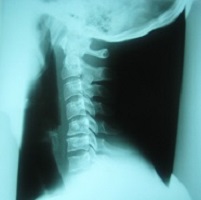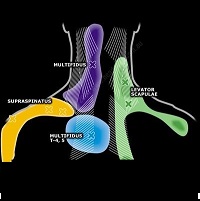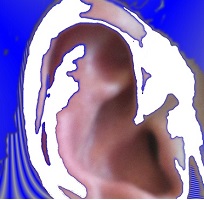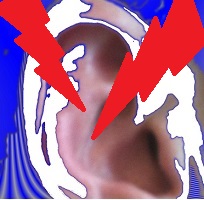HEADACHE & MIGRAINE TREATMENT & RELIEF:
DIETARY ADVICE
A Food diary is always useful to demonstrate a relationship with dietand head pain.
Consider dietary triggers where attacks relate to certain foods.
Consider blood sugars where attacks relate to timing of meals and sugar content of foods.
Many different approaches exist for addressing dietary problems, and triggers in relation to headache treatment and migraine treatment. It is important to address any problems in the context of the individual; and to look for other potential factors which may also be contributing to the onset of head-pain attacks. For example, an individual may have a history of neck problems, menstrual related migraines, food sensitivities, and regularly skips meals. In such cases a 'combined approach' to the problem may have more success than addressing the dietary problems alone.This means that the neck problems should be addressed, the menstrual cycle investigated (and any contraceptive issues), and food triggers removed as well as dietary habits modified.
In any case, dietary problems can be addressed to varying extents by the following professions
- Dieticians - these health professionals are highly trained in assessing, and modifying dietary habits. Everything from cooking methods, eating habits, and food groups can be scrutinised and modified.
- Chiropractors, Medical Doctors, Physiotherapists, Osteopaths - all of these professions have a certain level of training in Nutrition and Dietary issues, and can give valuable guidance in identifying problems that may be contributing to headaches and migraines. Also problems which may warrant further investigation by a specialist can be identified, and the appropriate steps taken.
- Naturopaths - this health care profession is also highly trained in dietary related issues, as well as natural substitutes and herbal therapies. Many headache and migraine sufferers report excellent results with some forms of herbal therapies, and naturopaths have much to offer in this area.
All dietary issues should be properly assessed, to obtain optimal results.
Dietary problems often accompany other problems and should be addressed as part of the whole headache and migraine picture.
All cases of headache & migraine need to be properly diagnosed by a trained health care professional first.your family doctor is ideally positioned to help make decisions with you and co-ordinate any therapeutic trials. Many cases have a number of causes (not just one), so it is important to consider a combination of therapies / or approaches when this is the case.
Head Pain Articles by Head Pain Experts
Pain Relievers Medications for Headaches and Migraines
Pain Relief-Medications for Headache & Migraine Suffers. Dear Reader, Please read Disclaimer first. Disclaimer:- Information given here is for information only, not a substitute for medical advice, always consult your doctor and pharmacist for tailored individual advices. This is of particular importance as overuse of all drugs (including aspirin and paracetamol) use to treat headache… Read More
Blood Sugars
Blood Sugar Levels: HYPO vs HYPER-GLYCAEMIA There is some evidence that suggests our blood sugar levels play a role in the causation of headaches and migraines. Blood sugar levels fluctuate according to intake of food and medications, and are regulated by a number of hormones, mainly Insulin and Adrenalin. Our bodies system for regulating sugar… Read More
Caffeine addiction
Caffeine Addiction Many people’s headaches are related to their consumption of caffeine, most commonly in the form of coffee, tea, soft drinks, chocolate, and medications. Generally the headache is due to a “withdrawal” effect. Caffeine is very similar in structure to another chemical in our body called adenosine. One of adenosine’s jobs is to dilate… Read More
Common food triggers
Common Food Triggers Certain types of food additives and preservatives, as well as some naturally occurring food chemicals are known to be active “triggers” in the causation of headaches and migraines. This is generally due to their vaso-active properties, which means their ability to affect our bodies blood vessels, particularly those supplying the head and… Read More
Upper Neck stiffness
Upper Neck Stiffness Cervical Joint Dysfunction: Upper neck problems are a common cause of referred pain into the head region. Research has demonstrated how the nerves in the upper neck (when irritated), can send pain signals into the head and face regions; researchers believe this happens because the nerves supplying the skin and other sensitive… Read More
Muscular Trigger points
Muscular Trigger Points Muscular ‘trigger points’ commonly refer to discrete areas within a muscle which send a sensation of pain to an adjacent area; when pressed upon. Researchers believe that these points consist of tight areas within a muscle which are extraordinarily sensitive, due to a build up of wastes and chemicals which the body… Read More
Tension type headaches
Tension Type Headaches This category of headaches is not well defined in the literature and is often a diagnosis given for aching or tightness around the back of the skull, temples, and even in around the forehead; of variable intensity and duration, but often long lasting and commonly related to stress and tightness in the… Read More
Neuralgia
Neuralgia (Nerve Pain) Occipital Neuralgia: This condition is believed to be due to irritation to the main sensory nerve in the back of the head; (that which supplies all of the skin and pain sensitive structures in the upper neck and back of skull). It is believed that this irritation may be caused by tightness in… Read More
General Ear pain
General Ear Pain:Problems Headache Secondary to Diseases of the Ear, Nose & Throat Headache Introduction:In preparing notes for a lay persons web site about the ear, nose and throat causes of headache, one must appreciate that only a brief and incomplete description of the causes, clinical presentation, investigation and management of these conditions can be… Read More
Referred Ear pain: Otalgia
Referred Ear Pain: Otalgia Ear pain is known as otalgia. The ear is generally described in three parts: outer, middle and inner. Different conditions can affect each of these separately or can progressively involve all parts of the ear bone and its surrounding structures. Pain, especially constant or worsening pain about the ear, is a… Read More











